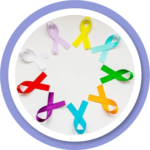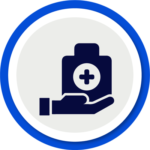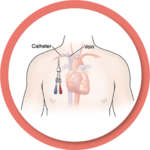
Be Able. Be Free. Be Visible.
A cancer diagnosis may instil many emotions – shock, disbelief, fear, sadness, anger. This is a disease that is difficult to come to terms with. The question, ‘Why me?’ is always there. But you are not alone in this fight. Your family and friends are there to support you.
The first step towards beating this disease is to know it, and we stand with you on this journey by sharing knowledge and solutions that will help you lead a near normal life.
What is cancer?
Cancer is a large group of diseases that can start in almost any organ or tissue of the body when abnormal cells grow uncontrollably. These cells can go beyond their usual boundaries to invade adjoining parts of the body and/or spread to other organs.1
Types of cancer
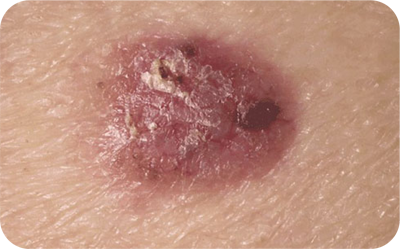
Carcinoma: The most common type of cancer that starts in the epithelial cells. Breast cancer, prostate cancer, lung cancer, stomach cancer, and blood cancer are some of the instances of carcinomas.2
Sarcoma: This type of cancer forms in bones and soft tissues of the body, including muscles, tendons, blood vessels, nerves, and tissue around joints.2
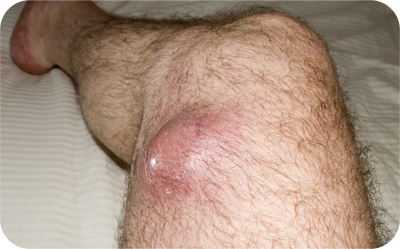
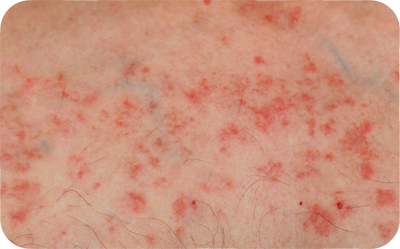
Leukemia: When cancer forms in the blood-forming tissues in the bone marrow, it is called leukemia.2
Lymphoma: This type of cancer originates in the lymphocytes or white blood cells that are a part of the immune system.2
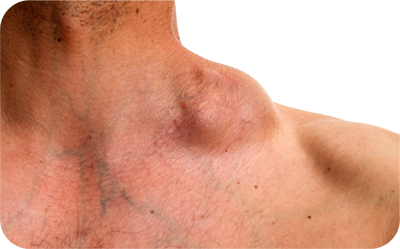
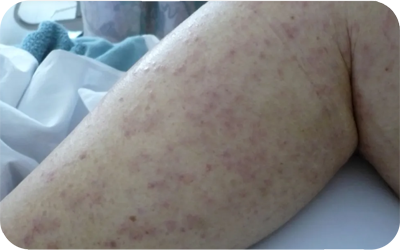
Multiple myeloma: A type of cancer that begins in plasma cells, which are also a part of the immune system.2
Melanoma: This type of cancer affects the skin and begins in cells that can become melanocytes. Melanocytes are cells that make melanin which gives the skin its color. It can also affect the eye.2
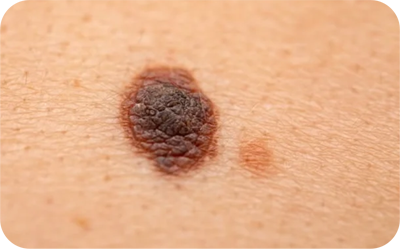
Early detection can stop cancer from stripping away the joy of being able and alive.
Earlier detection of cancer helps in better patient care with better patient outcomes. This is mainly because, with time, the tumor cells grow and can spread to other areas of the body. So, the goal of cancer treatment is to inhibit the growth of cancerous cells and to shrink your cancer.3 Depending on the location of the tumor, the growth, type, and your general health, the oncologist will determine your treatment modality.
What is cancer?
Cancer is a large group of diseases that can start in almost any organ or tissue of the body when abnormal cells grow uncontrollably. These cells can go beyond their usual boundaries to invade adjoining parts of the body and/or spread to other organs.1
Types of cancer

Carcinoma: The most common type of cancer that starts in the epithelial cells. Breast cancer, prostate cancer, lung cancer, stomach cancer, and blood cancer are some of the instances of carcinomas.2

Sarcoma: This type of cancer forms in bones and soft tissues of the body, including muscles, tendons, blood vessels, nerves, and tissue around joints.2

Leukemia: When cancer forms in the blood-forming tissues in the bone marrow, it is called leukemia.2

Lymphoma: This type of cancer originates in the lymphocytes or white blood cells that are a part of the immune system.2

Multiple myeloma: A type of cancer that begins in plasma cells, which are also a part of the immune system.2

Melanoma: This type of cancer affects the skin and begins in cells that can become melanocytes. Melanocytes are cells that make melanin which gives the skin its color. It can also affect the eye.2
Early detection can stop cancer from stripping away the joy of being able and alive.
Earlier detection of cancer helps in better patient care with better patient outcomes. This is mainly because, with time, the tumor cells grow and can spread to other areas of the body. So, the goal of cancer treatment is to inhibit the growth of cancerous cells and to shrink your cancer.3 Depending on the location of the tumor, the growth, type, and your general health, the oncologist will determine your treatment modality.
Types of chemotherapy
The following are the processes for doing chemotherapy.
- Chemo drugs can come in the form of pills or capsules that can be taken orally.4
Types of chemotherapy
The following are the processes for doing chemotherapy.
Chemo drugs can come in the form of pills or capsules that can be taken orally.4

- Intravenous procedure, where medications are given through catheters into a vein.5
- For the intravenous process, the drugs need to be given through a Vascular Access Device (VAD).6
- VAD can be placed in7
- Peripheral lines: your veins in your arm, elbow or foot8
- Central lines: a large vein of your neck, chest or groin9

For the intravenous process, the drugs need to be given through a Vascular Access Device (VAD).6 VAD can be placed in7
- Peripheral lines: your veins in your arm, elbow or foot8
- Central lines: a large vein of your neck, chest or groin9
There are four types of vascular access devices

Ports:
Ports are surgically placed under the skin for repeated access10

Peripheral Intravenous Catheters (PIVCs):
PIVCs can be placed by the clinician at the bedside, in the lower arm11

Peripherally Inserted Central Catheters (PICCs)
PICCs are external devices that are placed in the upper arm8
Centrally Inserted Central Catheters (CICCs)
CICCs are placed in a large vein in the neck, chest, or groin9

Ports:
Ports are surgically placed under the skin for repeated access10

Peripheral Intravenous Catheters (PIVCs):
PIVCs can be placed by the clinician at the bedside, in the lower arm11

Peripherally Inserted Central Catheters (PICCs)
PICCs are external devices that are placed in the upper arm8
Centrally Inserted Central Catheters (CICCs)
CICCs are placed in a large vein in the neck, chest, or groin9

